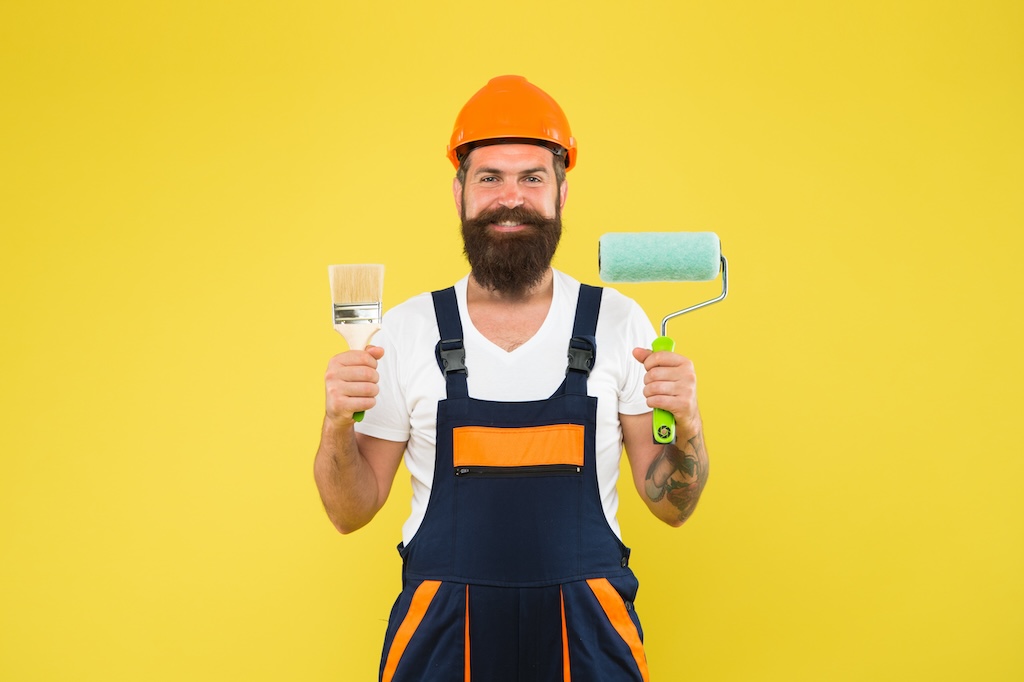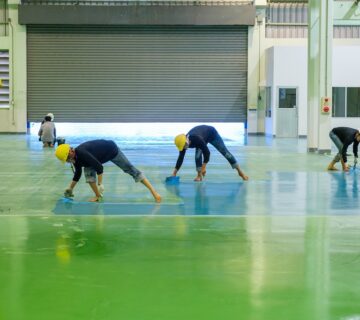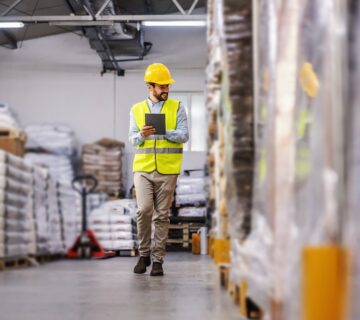House painting, whether it’s a DIY project or a professional undertaking, involves more than just selecting the right color and applying it to the walls. Safety is a paramount concern that should be at the forefront of any painting project. Paints and related materials can pose various risks if not handled properly, including exposure to toxic fumes, physical injuries from falls or accidents, and fire hazards. This blog outlines the best practices for ensuring safety while painting your house, highlighting the importance of preparation, appropriate equipment, and mindful execution to avoid common hazards and ensure a safe environment for everyone involved.
Understanding Paint and Chemical Safety
Before starting your painting project, familiarize yourself with the types of paints and solvents you’ll be using. Many traditional paints contain volatile organic compounds (VOCs) that can be harmful when inhaled. Opt for low-VOC or no-VOC paints whenever possible to minimize health risks. Always read labels and safety data sheets for any product you use to be well-informed of any necessary precautions and first aid measures in case of accidental exposure. By understanding these materials, you can protect yourself from potential health risks and ensure a safer painting experience.
Adequate Ventilation
Proper ventilation is crucial, especially when working indoors. Paint fumes can cause headaches, dizziness, nausea, and irritation of the respiratory tract, making it essential to maintain good airflow. Open windows and doors to allow fresh air to circulate freely throughout the workspace. If you’re using spray paint or working with strong solvents, wearing a mask or respirator is advisable to avoid inhaling toxic fumes, ensuring your respiratory health is not compromised during the project.
Safe Ladder Usage
Ladders are indispensable in painting projects, but they come with risks. Ensure that the ladder is stable and securely placed before climbing to prevent accidents. Avoid overreaching while on a ladder, as this can cause it to tip and lead to falls. If you need to reach a higher spot, climb down and move the ladder instead of stretching beyond a safe distance. Always use ladders according to the manufacturer’s guidelines and avoid standing on the top rung to maintain balance and safety.
Protective Clothing and Gear
Wearing the right protective clothing can prevent many paint-related accidents. Long sleeves and pants protect your skin from paint splatters and spills, which can be harmful if solvents are involved. Gloves can protect your hands, especially when cleaning brushes or using solvents, while safety goggles are essential to prevent paint or chemicals from getting into your eyes. If you are sanding surfaces or working in a dusty area, a dust mask is necessary to avoid inhaling particulates, ensuring your personal protection throughout the project.
Safe Handling and Storage
Proper handling and storage of paint and solvents are vital for safety. Keep them away from heat sources, as many paint products are flammable and can pose serious risks. Ensure that containers are sealed properly when not in use and store them in a cool, dry place to prevent accidental spills or reactions. Keep paints and solvents out of reach of children and pets to avoid accidental ingestion or contact, reinforcing the importance of safe storage practices in maintaining a secure environment.
Disposal of Paint Products
Disposing of paint and paint-related products must be done responsibly to avoid environmental contamination. Never pour paint down the drain or into the ground, as it can lead to significant environmental damage. Check with your local waste management facility for guidelines on disposing of paint and solvent containers properly, ensuring that these materials are handled in an environmentally responsible manner.
Emergency Preparedness
Be prepared for emergencies. Keep a first aid kit, fire extinguisher, and a phone nearby in case of accidents. Knowing basic first aid can be invaluable in case of minor injuries and can make a critical difference in managing accidents effectively. Being well-prepared helps mitigate the effects of any incidents, ensuring that help is readily available if needed.
Final Thoughts
Safety should always be the top priority in any house painting project. By understanding the risks and adhering to best safety practices, you can ensure that your project is not only successful but also safe for everyone involved. Remember, taking a few extra precautions can make a significant difference in preventing accidents and health hazards, allowing you to complete your painting project efficiently and safely. For more information on safe painting practices, visit our website at sisupainting.com and explore our blog at sisupainting.com/blog.





No comment